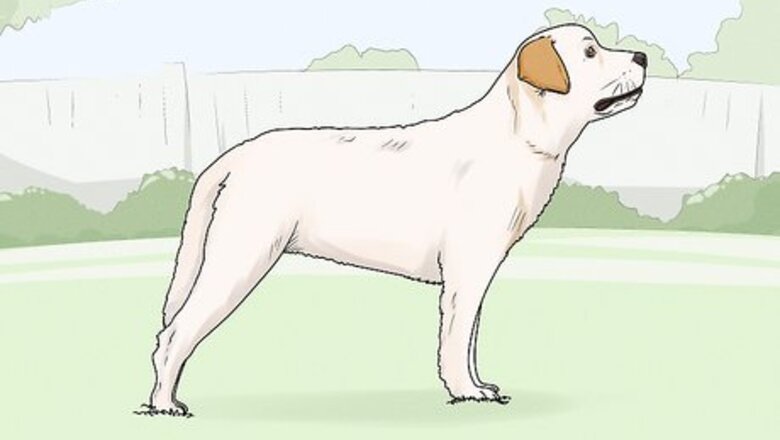
views
X
Trustworthy Source
American Kennel Club
The American Kennel Club (AKC) is a purebred dog pedigree registry in the United States. The AKC advocates for the responsible ownership of dogs and promotes purebred dog events, such as the Westminster Dog Show.
Go to source
They’re also the most popular breed in the United States, and they make great family pets. This wikiHow will provide you with some information on identifying whether or not a dog is a Labrador Retriever.
Body Structure
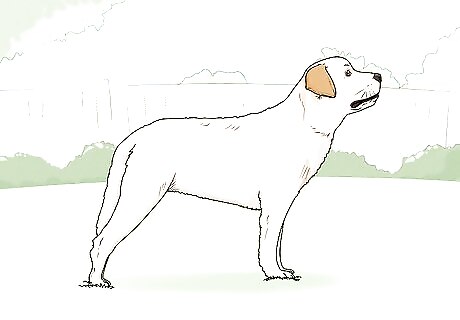
Check the size of the dog. Labrador Retrievers, on average, are medium-sized dogs. Male Labrador Retrievers are generally anywhere from 22.5–24.5 inches (57–62 cm) tall, and they usually weigh anywhere from 65–80 pounds (29–36 kg), whereas female Labrador Retrievers generally are a little smaller, and generally anywhere from 21.5–23.5 inches (55–60 cm) tall, and they usually weigh anywhere from 55–70 pounds (25–32 kg). It will generally reach this height between the ages of 6 and 12 months, but it may continue growing until it reaches the age of 2. American Labrador Retrievers are usually slightly shorter, but slimmer than English Labrador Retrievers.
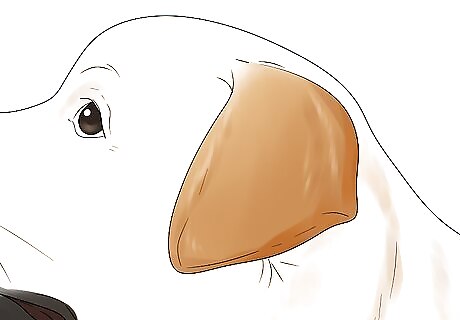
Notice the dog’s ears. A Labrador Retriever’s ears are far back, and hang relatively close to their head.
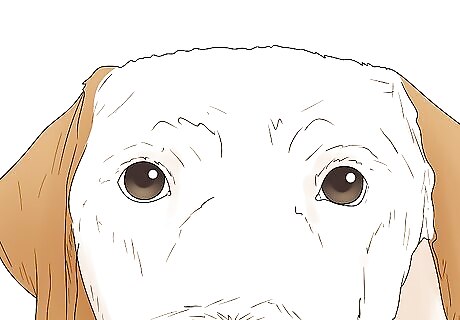
Check the eyes of the dog. The eyes are medium-sized, relatively far apart, and their color varies, depending on the type of Labrador Retriever. Black and Yellow Labrador Retrievers usually have brown eyes with a black eye rim, where as Chocolate Labrador Retrievers will usually have either brown or hazel eyes, with a brown eye rim. The eyes also give off the appearance of the dog being friendly, and this is one of the dog’s distinguishing features.
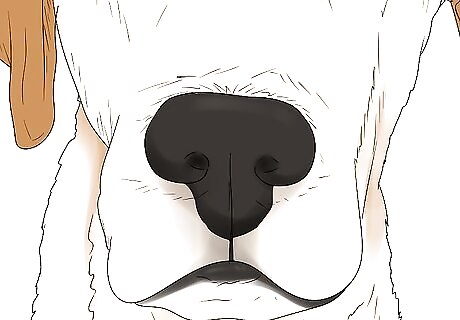
Notice if the dog has a black or brown nose. Black or Yellow Labrador Retrievers will generally have black noses, whereas Chocolate Labrador Retrievers will usually have a brown nose. Labrador Retrievers won’t typically have a pink or uncolored nose.
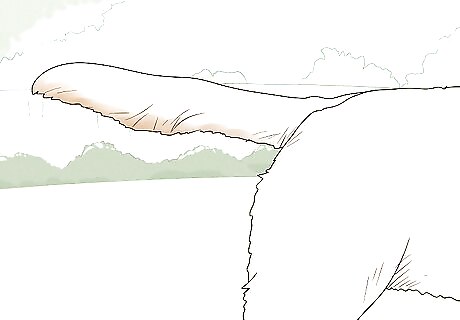
Look at the dog’s tail. This is regarded as one of the identifying characteristics of the dog, due to its structure. The tail is thick at the bottom, and gradually gets thinner towards its tip. Because of this unique structure, the tail is often referred to as an “otter” tail. Tails of Labrador Retrievers are not docked. This “otter” tail is usually more noticeable in English Labrador Retrievers.
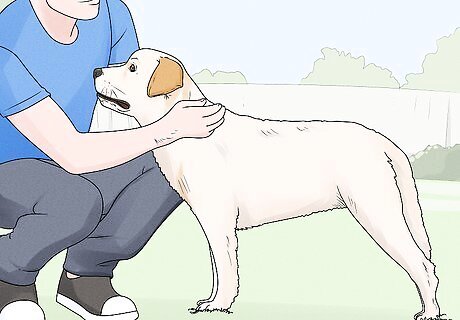
Check the overall body structure of the dog. Labrador Retrievers have a strong build, and a relatively normal gait, with their legs appearing to be in a parallel line as they’re walking. The American Labrador Retriever will generally have a longer, thinner neck, as well as a more narrow head.
Coat
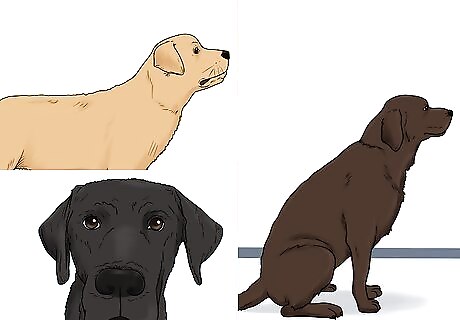
Look for one of 3 colors. As stated earlier on, Labrador Retrievers will generally either have a black, brown (“chocolate”), or yellow coat. While these coats may occasionally vary in shade, the Labrador Retriever’s coat is generally a solid color rather than a combination of different colors.
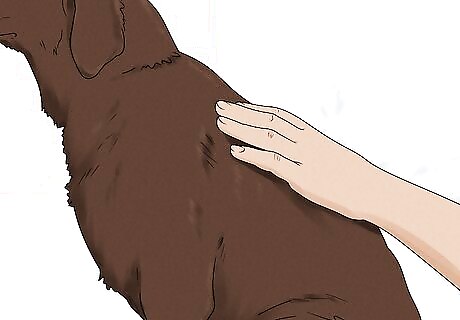
See if the dog has a short, dense, hard coat. It also has a weather-resistant soft undercoat (which you likely cannot see), giving it protection from all types of weather. Both of these things are typical of Labrador Retrievers. An English Labrador Retriever will generally have a thicker coat than an American Labrador Retriever.
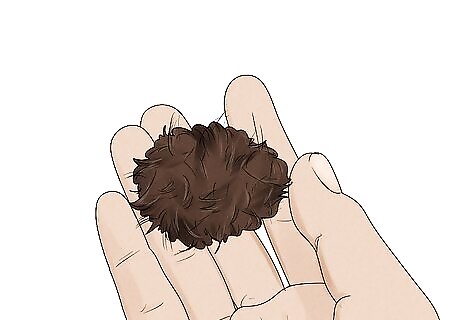
Check for frequent shedding. Labrador Retrievers tend to shed more frequently than other dogs, particularly during two or three weeks in the spring. This increase in shedding is likely because of the second “undercoat” that Labrador Retrievers have.
Behavior and Temperament
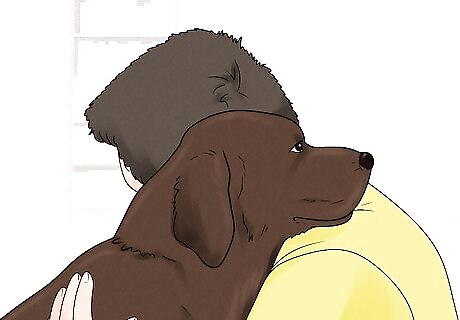
Notice the dog’s friendly, affectionate demeanor. Labrador Retrievers are perhaps most well-known for being very friendly and affectionate, and this is one of the things that makes them a great choice for a family pet.
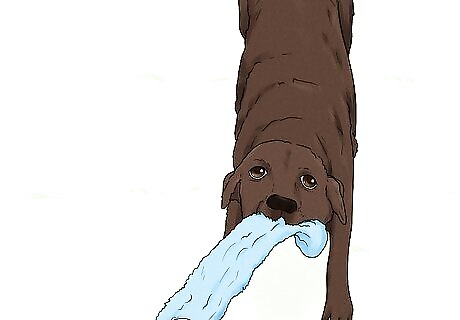
Look for high energy in the dog. Despite the fact that they’re friendly and affectionate, Labrador Retrievers have a lot of energy and love to play. Because of this high energy, they’ll likely need a lot of exercise. Though an English Labrador Retriever will most definitely still have quite a bit of energy, American Labrador Retrievers will generally have more. Try a walk or a game of fetch/retrieve if you’re looking for ways to give your Labrador Retriever exercise. Some labs love tug-of war if you give them something worthwhile - but each dog is different.
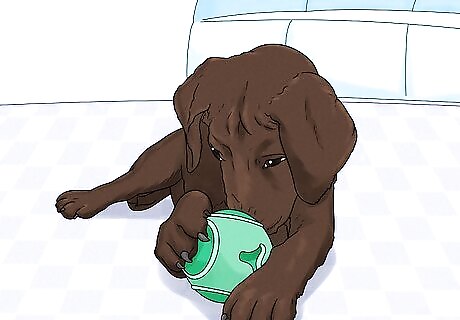
Anticipate some potential mouthing. Mouthing is basically when the dog chews lightly on something, sometimes your hands, or long sleeves. Be sure that you give your dog plenty of toys to help lessen the occurrence of this.
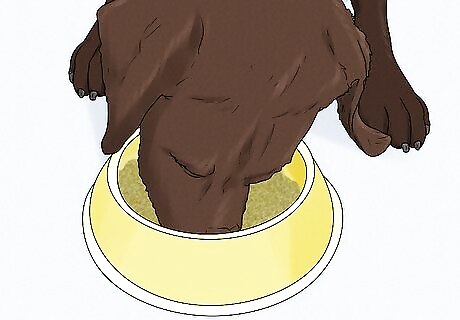
Notice a love of food. Labrador retrievers generally love to eat a lot of food, and they are more prone to becoming overweight because of this.
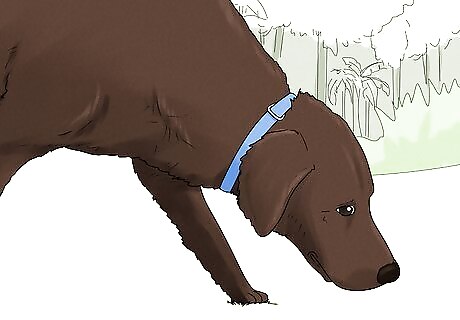
Look for focus from the dog, especially when following a scent. Since Labrador Retrievers are generally bred to be working dogs, if they find a scent, they’ll likely stay focused on following it until it finds where it was coming from. They’re also known to be very intelligent, for the same reason that they’re a working dog.




















Comments
0 comment